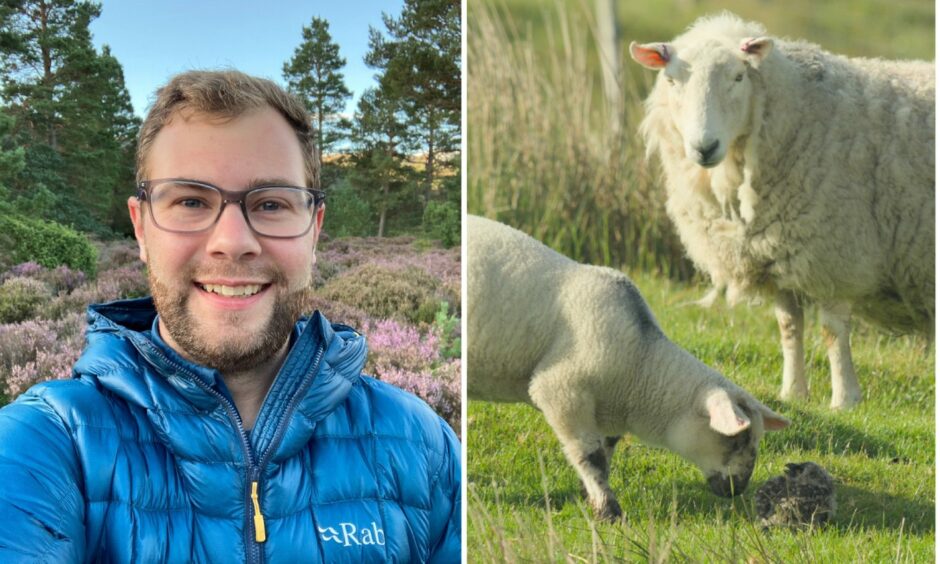
A magical encounter between an owl chick and a lamb captured by an acclaimed Perthshire film-maker is among the highlights of a new BBC wildlife series.
Fergus Gill was filming short-eared owls in North Uist when he experienced one of his most magical wildlife encounters yet.
Spotting an owl chick right outside his hide, he gazed in wonder as the fluffy creature popped out of dense rushes and came face to face with a lamb and its mum.
“They really didn’t know what to make of one another,” recalls Fergus, from Wolfhill in Perthshire.
“Imagine being that owl chick with these fluffy white giants you’ve never seen before looming over you!
“After a staring contest the lamb walked right up to the owlet – perhaps it thought it had found a new playmate.”
An amazing encounter
The cute pair continued to look each other up and down but the lamb, keen for more action, went a step too far, giving the owlet a gentle nudge with its head. The owlet, however, decided enough was enough and made a sharp exit.
“It was one of those moments you could never plan for – an amazing encounter,” reflects Fergus, 31.
“Little did the chick know it was living in a field with many such neighbours!”
The encounter forms part of a new three-part BBC series – Scotland the New Wild – which sees acclaimed film-maker Fergus head deep into the wilderness to showcase the country’s wildlife, scenery and habitats.
Intimate but wide-ranging portrait
Described as an intimate but also wide-ranging portrait of the varied wildlife of Scotland, the series explores behaviours that have never been filmed before, and stories of rare species that face uncertain futures.
Each episode explores a different part of the country – the Islands, the Lowlands, and the Highlands.
Habitats in the series range from the Caledonian forest of the Highlands, to the machair of the Western isles, and the seagrass meadows in the shallow seas around Scotland’s coast, as well as unexpected urban surprises.
Among the treasures featured are dramatic fights between grey seal bulls on the remote Monach Isles, red deer rutting on the isle of Rum, peregrine falcons patrolling Edinburgh’s skies, fox cubs taking their first steps beside the Water of Leith, and water voles living happily in Glasgow – far from the water.
Dramatic footage
The series also features dramatic footage from high up in the Scots pine canopy as wood ants ‘farm’ aphids and basking sharks feast on plankton blooms off the coast.
Three years in the making, the series was produced by Glasgow-based Maramedia in co-production with Terra Mater Studios, Skyland Productions and Doclights/NDR Naturfilm.
While Fergus filmed the vast majority of the series, a few scenes were shot by Pete Barden and others.
Emmerdale actor
Narrated by Scottish actor Thoren Ferguson – who played physiotherapist Kit in Emmerdale and grew up in the Black Isle and Edinburgh – the series has a specially-composed soundtrack by award-winning Glasgow-based composer Fraser Purdie.
As well as being an appreciation of Scotland’s wildlife, it offers an assessment of the challenges facing the natural world at a time of rising awareness of the climate change and biodiversity crisis.
‘The chicks started getting adventurous’
The owl chick and lamb encounter was captured during the third year of filming when the focus was on the machair and crofting system on North Uist in the Outer Hebrides.
“One of the main species we were hoping to film were short-eared owls,” explains Fergus, who has a degree in zoology from the University of Glasgow.
“We located a family rearing their chicks on the edge of the croft but filming them was really difficult.
“After a couple of weeks in the nest, the chicks start getting adventurous and dispersed in all directions.
“Knowing where to look was a real challenge. I was just lucky to spot one outside my hide one evening.”
Red deer rut
Another highlight in the first episode, Islands, is the red deer rut on Rum.
Fergus and his team spent a wet and windswept week on the Hebridean island in autumn and were blown away by the sound of bellowing stags.
“We spent most of the week watching one stag in particular,” he says.
“He was so big and dominant and had a large group of hinds who seemed rather pleased with him.
“We knew that eventually this would draw in challengers. But we had to be patient! Days passed with nothing. Then it all kicked off in a heartbeat.
“Some young stags broke into the herd and caused chaos. The dominant stag was busy chasing them off, when one of his rivals decided now was his chance and challenged him.
“It was a brutal fight; the dominant stag was so powerful. He pushed his rival back with such force that he snapped off one of his rivals’ antlers.”
The Tay beavers
The second episode, Lowlands, follows the River Tay, and sees Fergus obsessively filming a beaver family around Perth.
“I was doing this for weeks until the nights started drawing in too early and filming became impossible,” he recalls.
“The most surprising thing was how entertaining they were, especially the kits.
“They were full of character and really cheeky – playful with one another, but not above stealing food from each other or their parents!
“They kept drawing me back, dressed head-to-toe in camouflage, eager to see what they’d get up to that night.”
Bearded tits in the Tay reed beds
Bearded tits also feature in the Lowlands episode, filmed in the Tay reed beds, which Fergus describes as “amazing but slightly daunting”.
He says: “The reeds are over three metres tall and run for miles along the north side of the river.
“You lose all sense of direction pretty quickly as you can’t see anything other than them.
“It’s a dangerous place, especially with the ditches and the tides.
“Luckily, we’d enlisted the help of local expert Steve Moyes of the Tay Ringing Group who knows this place better than anyone.
“We were out in search of bearded tits, a beautiful little bird that lives there.
“On our first morning I remember being surrounded by them. You could hear their pinging calls but we couldn’t see them.
“With Steve’s knowledge we managed to have some amazing encounters.”
Pine martens and black grouse
The final episode, Highlands, largely filmed in the Cairngorms and Strathspey, features pine martens and an incredible black grouse lek.
Pine martens are among the most elusive animals in Scotland, so Fergus was hugely honoured to spend time in their presence.
“They’re such beautiful, charismatic animals, but you never know when or if you’ll see them,” he muses.
“They’re so quiet as they move through the forest. One moment you’re staring into an empty clearing and suddenly there they are.
“The rush of adrenaline in that moment is unreal; your heart is pounding.
“I was desperate to film the family together and interacting, spending hours sitting in my hide for weeks on end hoping and waiting.”
Black grouse lek
The black grouse lek – where male birds group together to compete for mates, in the hope that females will be impressed enough to mate with them – also proved an unforgettable experience.
It wasn’t long before I heard the whirring of wings and birds crashing to the ground around me.”
Fergus Gill
Fergus camped miles deep into a glen and set his alarm for 2.30am every morning in a bid to catch the lek in action.
“They have these amazing bubbly calls that can be heard from kilometres away,” he enthuses.
“The nights were never particularly restful, knowing I’d be getting up in a few hours and with temperatures below freezing.
“I’d crawl out of my sleeping bag, look out my headtorch and set off for my hide.
“It was pitch dark when I arrived, and it had to be. It wasn’t long before I heard the whirring of wings and birds crashing to the ground around me.
“I could hear them jumping and displaying.
“But it was still pitch black so I couldn’t see anything. It was one of the most amazing things I’ve ever experienced.
“The sound was incredible. As sunrise crept closer I got my first glimpse of the birds.”
Inspire and surprise
Ultimately Fergus and Maramedia co-director Jackie Savery hope the series will “inspire and surprise” viewers.
“It’s a definitive portrait of wild Scotland as it marches into the future,” says Jackie.
“It’s a focus on the entire country and the chance to winkle out some show-stopping things we can expect, but also some hidden things and areas we wouldn’t normally cover.
“Some of the stories – you just couldn’t script them. They’re often some of the funniest. I love the story of the little owlet. It looks like a round football of feathers!
“It’s such a sweet and fun story.”
Jackie is keen to stress that many of the species filmed are easily disturbed, especially when they have young, and in cases are legally protected requiring specific licences to film.
“We’re a specialist trained natural history team and always adhere to strict codes of conduct working with local species experts,” she adds.
The series uses time-lapse, slow-motion, aerial, and underwater camera systems to bring wildlife closer.
“The drone photography gives you the whole sense of how the landscape looks; it allows you to see Scotland in an incredible way,” adds Jackie.
“And with macro photography, we can get eyeball to eyeball with a spider.”
- The first episode of Scotland The New Wild airs on BBC Scotland on September 17 at 9pm. It will also transmit in Austria, and Germany before being screened internationally.
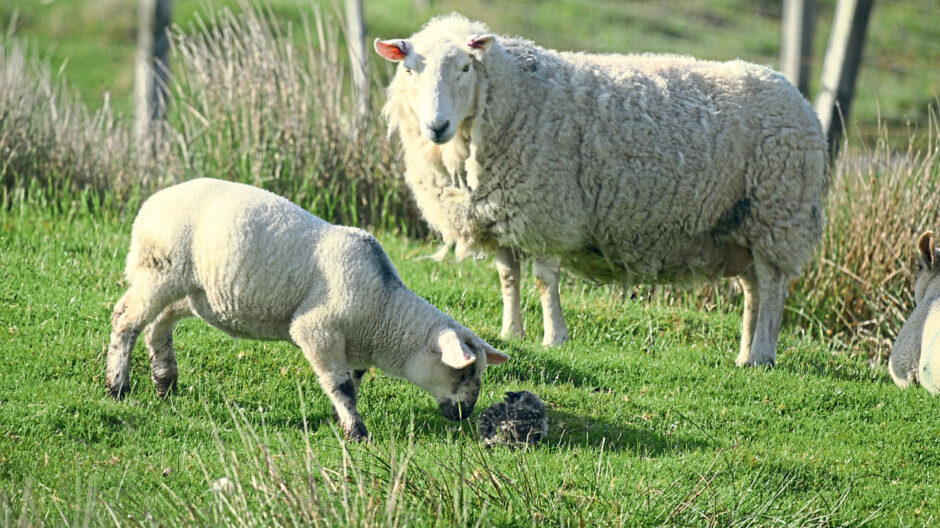
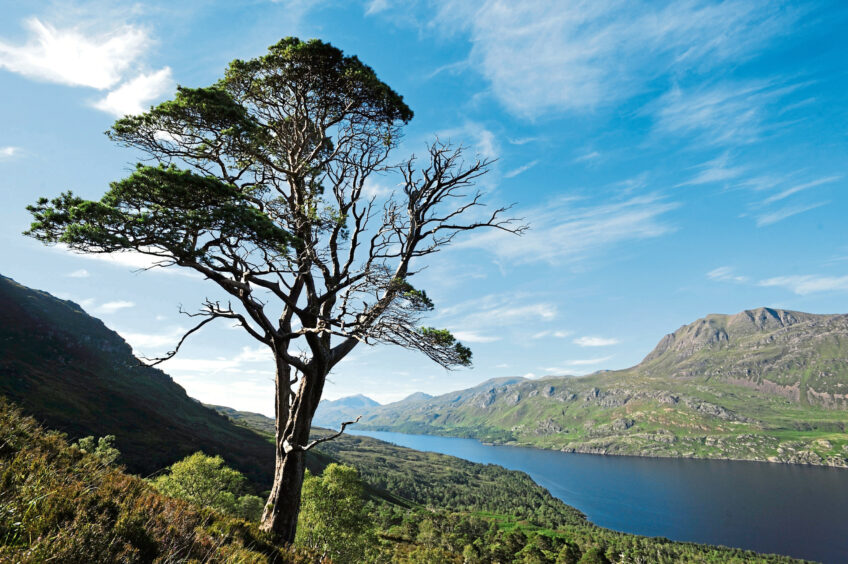
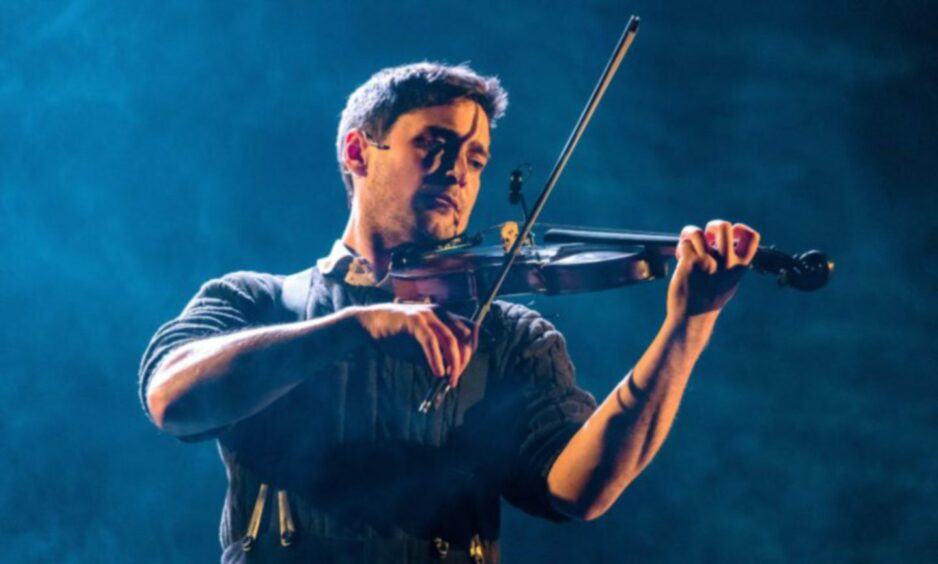
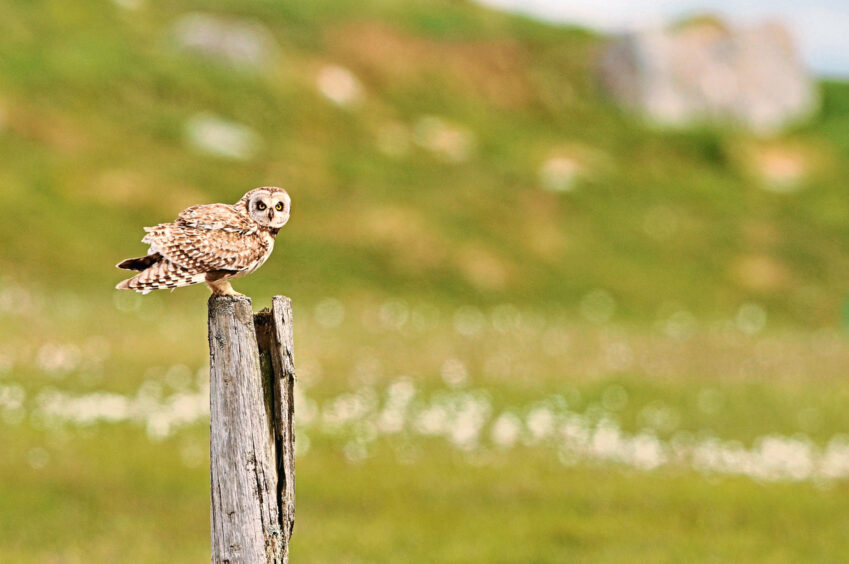

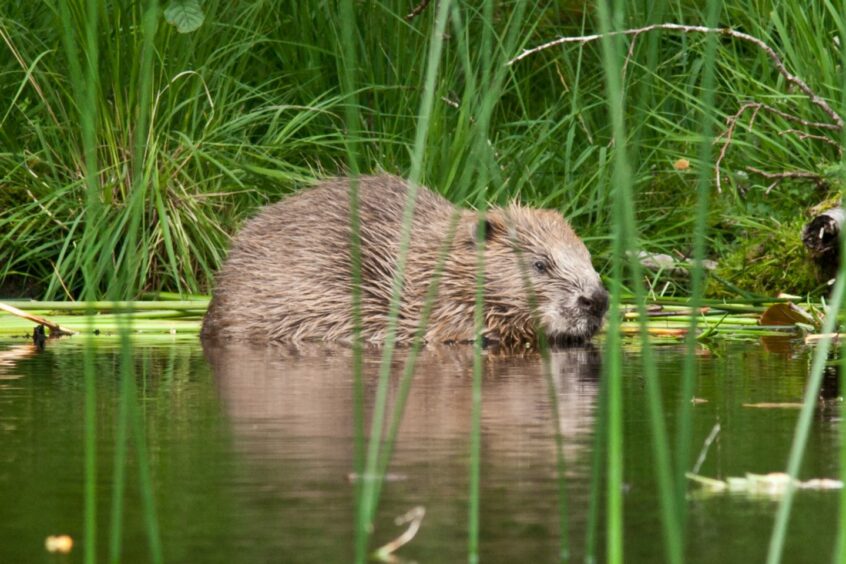
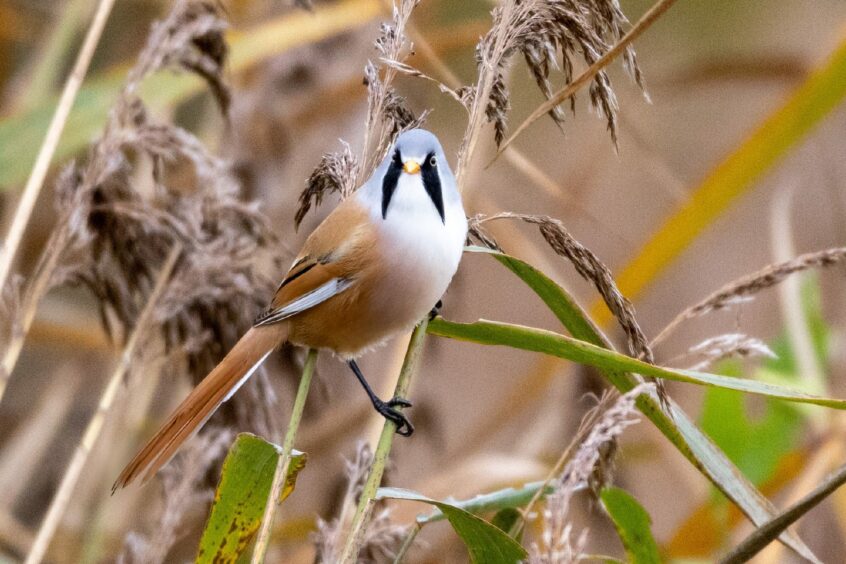
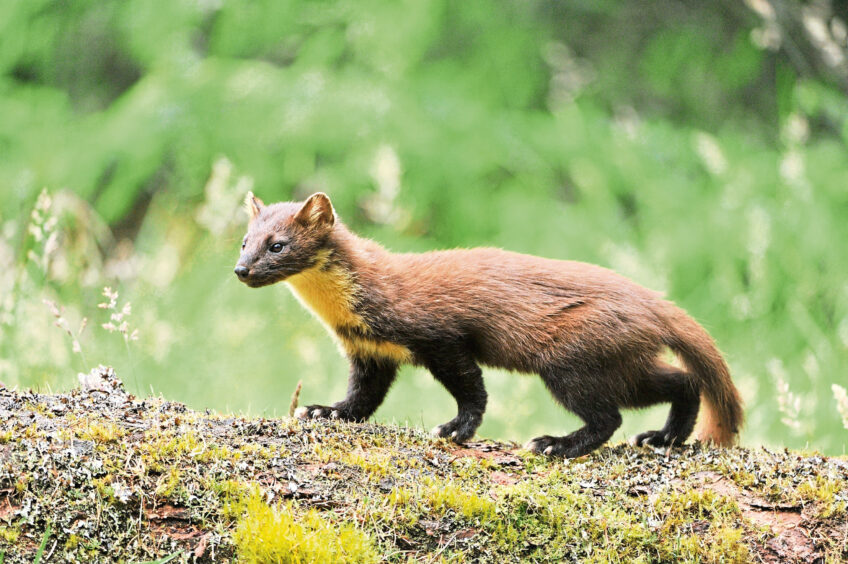
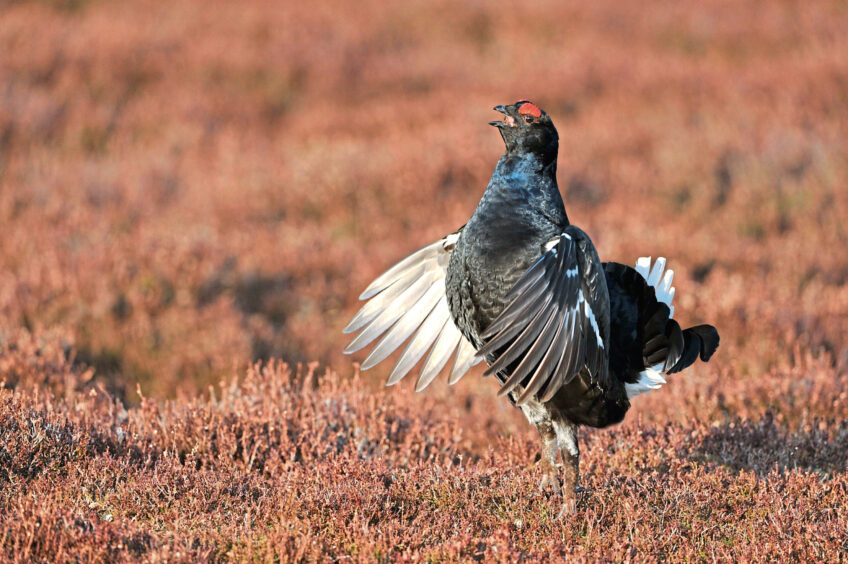
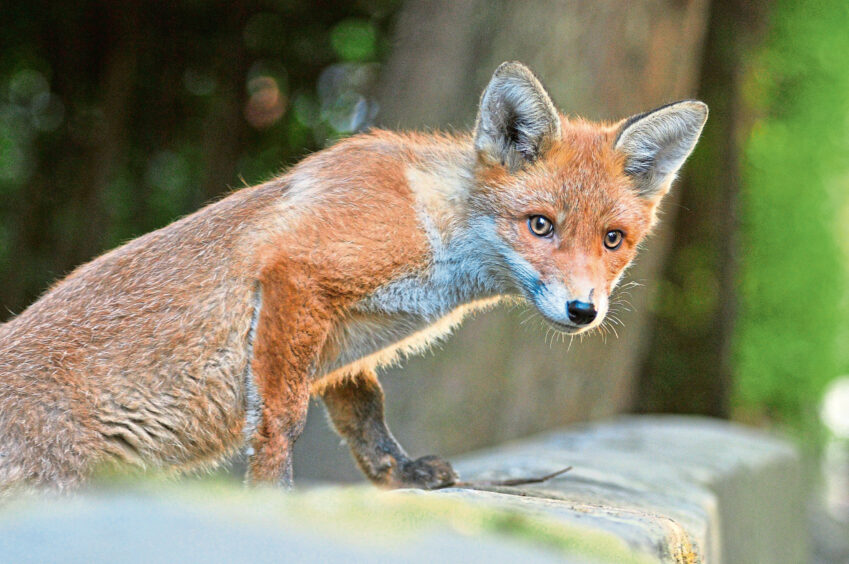
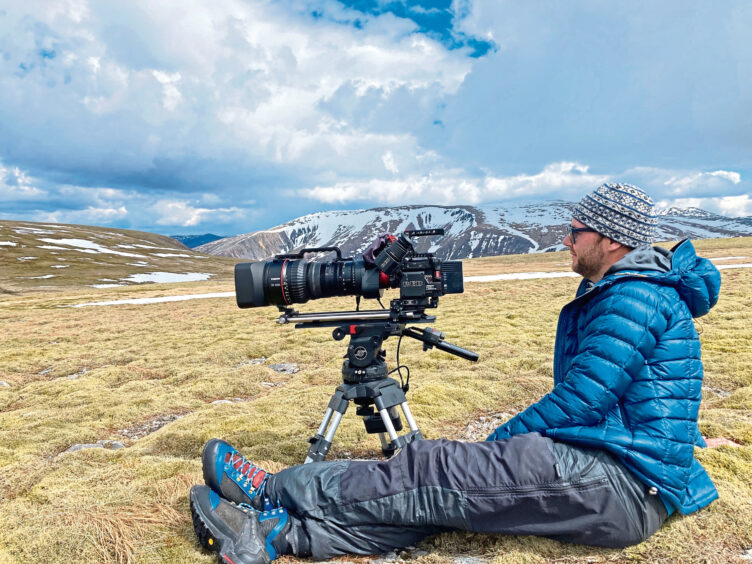










Conversation